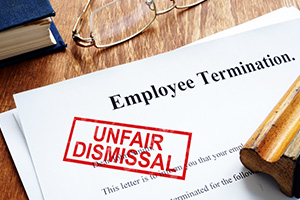[ad_1]
 Employee volunteers for redundancy, is then made redundant on the terms offered and yet still claims unfair dismissal. A non-starter, surely?
Employee volunteers for redundancy, is then made redundant on the terms offered and yet still claims unfair dismissal. A non-starter, surely?
That was the view taken by the Employment Tribunal in White –v- HC-One Oval Limited at the back end of 2020. Ms White had volunteered for redundancy so could reasonably dispute neither the existence of a redundancy situation nor the employer’s decision to dismiss her for it. In the circumstances her case was clearly going nowhere and so it was struck out by the ET on the grounds that it could have no reasonable prospects of success.
However, the Employment Appeal Tribunal has now overturned that decision in a case which provides a number of useful reminders to employers considering voluntary redundancy exercises.
First, while offering VR to minimise the number of compulsory dismissals is generally seen as a Good Thing, do not lose sight of the fact that someone who puts their hand up for VR is not resigning, merely volunteering to be dismissed. Therefore that key requirement of an unfair dismissal claim, a dismissal, is satisfied. Once you have a dismissal and the requisite length of service, there is nothing more you need to start a claim.
Second, people volunteer for redundancy in all sorts of states of knowledge, despair, anger, pragmatism and willingness. White had made it clear that she did so because she saw her proposed dismissal as artificially manufactured by the employer on the grounds of her part-time status and an earlier complaint about acting-up pay. In particular, she had not been offered an obviously suitable vacancy plus the employer had hired a full-time employee into a comparable role only a month or two earlier and it had been that person who had strangely been retained. White did not therefore believe that there was a redundancy situation at all, but could see nothing good coming out of standing her ground.
The EAT said that if those allegations were taken at their highest and treated as correct, which is what it has to do when considering a strike-out application, there could be no question of White’s claim having no reasonable prospects of success. The ET would have had to hear the evidence to know whether the redundancy was a put-up job or discriminatory or whether it was right, as the employer said, that White had been offered that suitable vacancy but had turned it down. As soon as you need to hear the evidence to determine the facts, a strike-out on no-prospects grounds becomes impossible, and so the ET’s decision was overturned.
It is the second of these points which creates the most risk to employers – that redundancy volunteers may feel themselves ill-treated or that they have no option for reasons which could taint the fairness of an ordinary dismissal. The fact of volunteering does not take that away. Further, that will particularly be the case if it turns out that the employee’s decision to take to the parachute is based on any sort of misrepresentation by the employer.
Notable in this case is the absence of any discussion of what, if anything, White signed as part of her VR process – there is no mention of any full and final settlement acknowledgement given by her in return for an enhanced severance payment, whether in a formal Settlement Agreement or a simple letter. But would that necessarily have made any difference?
If White had signed a simple letter to confirm that she would take £x to go away, that would not be binding on her. She would still be entitled to bring an unfair dismissal claim, though there is authority to suggest that if the ET found in her favour, it might reduce in her compensation to reflect any disapproval of her suing in direct breach of her own promise not to do so, binding or not.
By contract, a statutory Settlement Agreement would prevent such a claim in the great majority of cases. However, even a Settlement Agreement is at its heart just a contract and so it is still subject to basic contract law principles, including those relating to misrepresentation. That is where A makes an untrue statement to B which leads B to enter a contract, usually (not strictly necessarily) with A. if and when that statement is found to be untrue, that contract can be voided and/or damages claimed. Therefore if White had entered a Settlement Agreement based on the employer’s statement that it was genuinely reducing the number of staff in her role, that would normally be the end of the matter. However, if it then immediately recruited the replacement which it had planned all along, that Settlement Agreement could potentially be reopened. I have seen no cases dealing expressly with what happens if that only occurs outside the ET time limits. The presumption must be either that the ET would agree that it had not been reasonably practicable to present the claim earlier, so allowing it to proceed, and/or that the loss of the right to claim unfair dismissal would be brought as an action for damages in the civil courts.
Therefore if you are about to start a VR exercise:
- ensure that your explanation to employees of the circumstances leading to it is complete and accurate in all material respects;
- however tempting, don’t leap to grant the VR applications of those you know to be significantly disgruntled by the redundancy process – instead, hear out their grievances and if they still want to go after seeing your considered response, then so be it; and
- if in any doubt, insist that any voluntary redundancy is concluded on a full-blown Settlement Agreement.
[ad_2]




